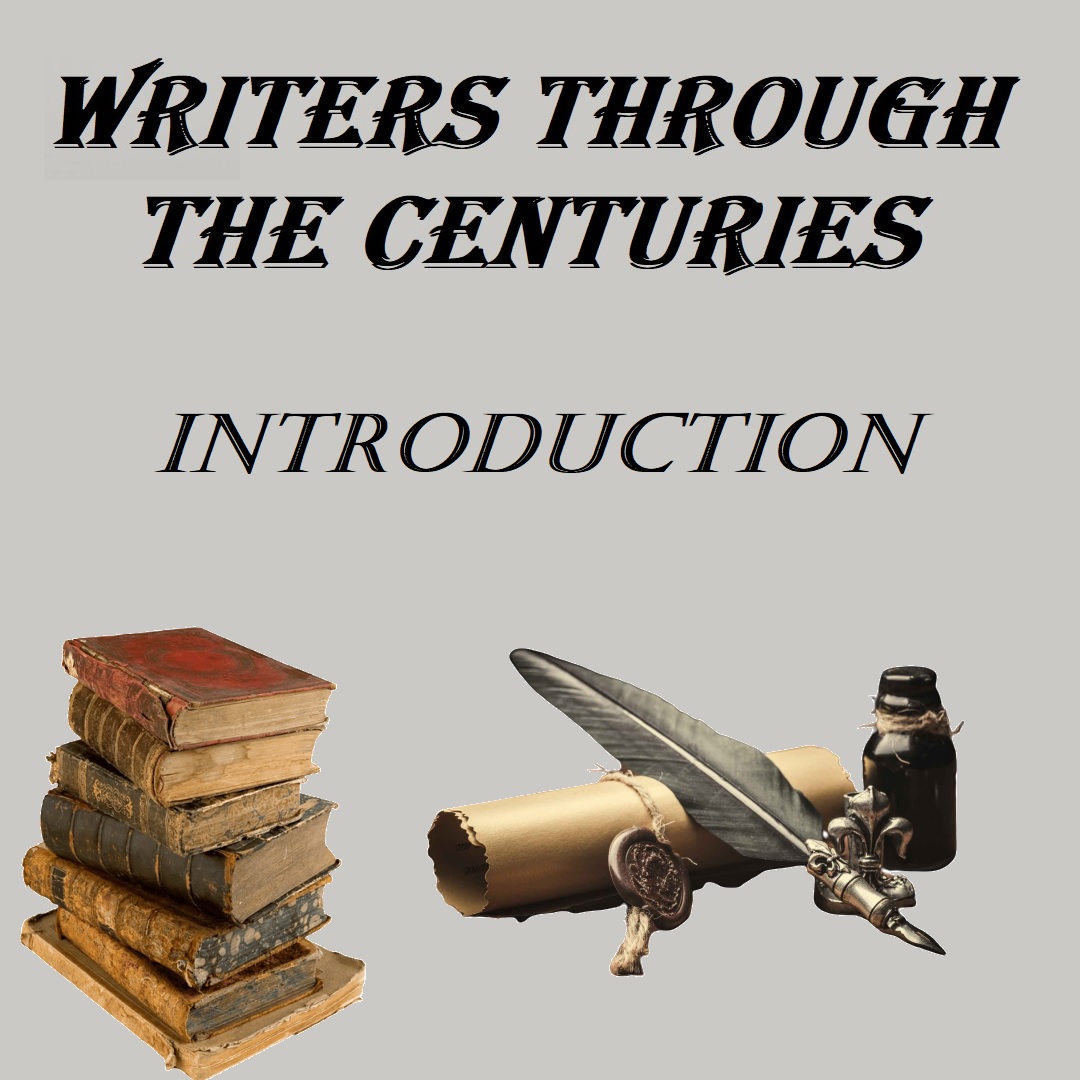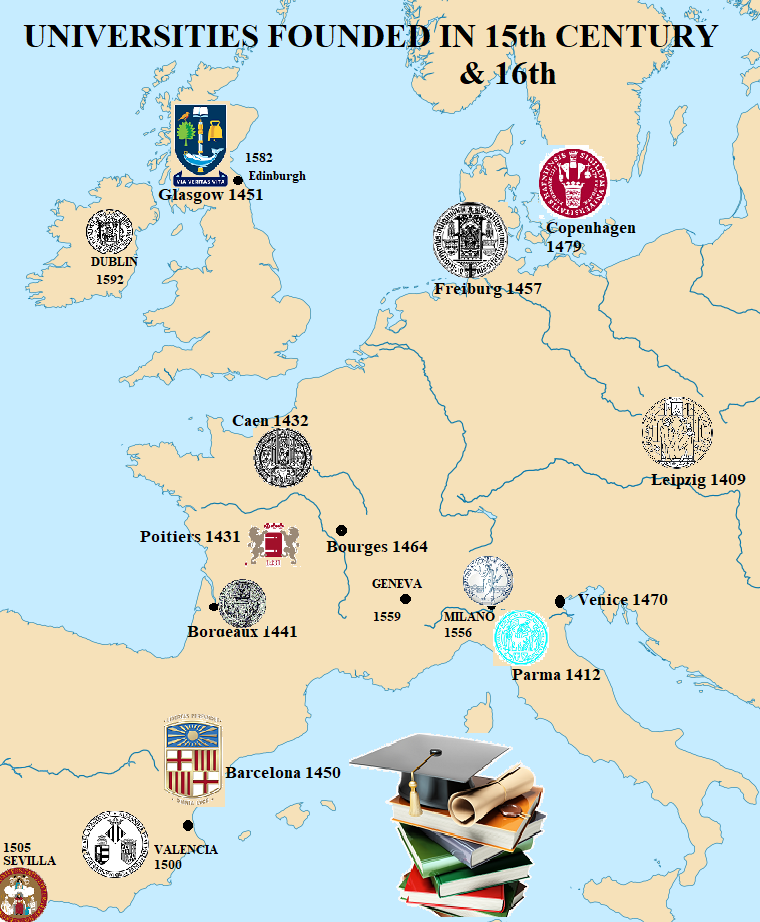Writers through the centuries - Introduction
episode 1

Authors shaped our literature and went beyond, shaped our world and pushed us to a tremendous effort to think for ourselves. There are so many things limited in this existence, creativity drawn on a piece of paper and presented as a novel is not one of them.
Starting from the 16th century, this will go on episode by episode till the present day’s authors.
The 16th century in art was shaped by the explosive era of a culture known to us as the Renaissance. A rediscovery and further development of art. Sculpture, painting, architecture, music and dancing flourish in the medieval court gatherings. To all this forms literature comes to fill the erudition scene. In the last period of the Renaissance literature had two main branches: theatre plays and written stories in the form of the novels. The first could be easily presented to an audience that was not necessarily skilled in the art of reading. While the second benefits of an increasing number of people learning to read, still nobility, but a growing number of people. Maybe facilitated by the apparition of the printing presses which enabled people to publish in their language and expand the number of readers.
Prior to the 16th century, most works were in Latin and Greek. Started by the pieces of the monastic orders: Dominican, Franciscan. Literature was now translated and could be read in: English, German, and French, enabling more people, still mainly of the higher class, to read, deemed fit for the upper levels of society, but an expanding nobility meant numerical there was still an increase.
Before this century the main types of the written word were shaped in the curly sentences of poetry, for the last decades theatre was gaining importance. Reason why we can see Shakespeare’s work is in the shape of theatrical plays. The presence of the allegory also defines Renaissance. Acts of valour, high morals performed by knights, or the metaphorical transformation of ideals, principles, virtues personifying them into characters is the topic of this century. The ideal persona becomes the knight, who is also brave as a soldier and sensible as a poet. The court member who is also educated and has steady valour principles, the chivalric romance is born.
The trigger of this flourishing period was rediscovering the ancient Greek philosophers' works: Aristotle, Plato, and Socrates. Previously, the bible and religious literature was the main focus in art (including literature), a good example is Dantes’ work.
The shift towards political discussions, and the kings of the time is emerging, and can be seen reflected in prose, the novels are smoothly sweeping in. The humanism of the renaissance puts the spotlight on the human. Human relationships, romantic encounter and the life of the courts start to gain attention.
The world of the Tudor dynasty gives much more credit to love. Passion turns Henric VIII to change the state religion of a country for his beloved Anne Boleyn. A few years later, only to underline the syntax: “From love to hate is there just one step”, he sentences her to be beheaded. In this world we see the Titan Shakespear focusing his well-crafted works onto the English kings, their lives, their passions, their human behaviour.
The religion revolution that shaped the 16th century (Lutheranism and Calvinism) also changed the world of literature, as the bible began to be translated into more languages. Humanism and Platonic influences of the renaissance took their role in defining the thought and central perception. People now wanted to become more educated.
This thirst for knowledge and desire for education drove the 15th and 16th-century race for Universities, more and more rise across different countries in Europe.
Among the universities founded in the 15th century, we must have the duty to mention: Leipzig (1409 Germany), Parma (1412 Italy), Poitiers (1431 France), Caen (1432 France), Bordeaux (1441 France), Barcelona (1450 Spain), Glasgow (1451 Scotland), Freiburg (1457 Germany), Bourges (1464 France). Venice (1470 Italy), Copenhagen (1479 Denmark), Valencia (1500 Spain).

16th century sees the first printing press in Scotland in 1507 and the first book printed here in 1508 (“The complaint of the Black knight”).
In Spain, the University of Seville is founded in 1505 under Pope Julius II’s papal bull, followed by Toledo, Santiago de Compostela, and Granada.
Milan also has in 1556 their University established, being one of the largest in the world today (almost 60,000 students).
Geneva, Switzerland, has also its university established in this century, in 1559.
Even in Eastern Europe, a University is established in Cluj-Napoca, Romania, in 1581.
The University of Edinburgh is founded in 1582.
In 1592 the University of Ireland, Dublin is founded with its leading college: Trinity College.
The century can be undoubtedly defined by two great authors, play writers or man of literature (depends on how you want to call them): William Shakespeare and Miguel de Cervantes.
You can almost get a sense of the changes towards a more cultured way of life that was forming. The renaissance did not take effect just in one category of art: it was in founding new universities, in new literature movements, or in new music instruments that were developing rapidly for the delight of the elite, of the kings’ courts.
The architecture was changing, as well. If the Romanesque architecture was predominantly used between the 6th century - 11th/12th century, architecture style characterized by high bold, semi-circular arches (Norman architecture) similar to Imperial Rome, this evolved into Gothic architecture and was succeeded by Renaissance architecture.
The Gothic architecture used from the 12th century till 16th century with grandiose semi-circular arches becomes now pointed arches and ribbed vault (meaning the ceiling had structures similar to ribs for support), made the use of the latest technology: like the tracery (windows are divided into sections), which allowed for more expansive windows and finally the stained glass that could form images (Notre Dame).
The renaissance movement brought essential changes to architecture because symmetrical components emphasised organized columns, a revival of the Roman arch style and columns style were now being used. The usage of aedicule (shrines) and niches (a statue castrated into a wall that heightened the attention by bolted arches above, usually niched in the walls). Hexagonal, perfect circled, or rectangles were used in the renaissance to show their passion for the rediscovered geometry. Huge paintings with just one scene at a time depicted.
Moduling (separating into modules - usually squares) were the main painting techniques. A revival of the columns: Doric, Ionic, Corinthian. The ceiling now becomes typically flat with a monumental painting on it.
Instruments like the: Flute (made initially from wood), Vielle (somewhat similar to a lyre, that has 3-5 strings, and has a more in-depth and more elongate body), the lute (predecessor to the guitar), mandore (predecessor of the mandolin), psaltery (similar to a harp) and the pipe organ used by the Catholic Church (at first made of wood) were now becoming more used, and recent improvements to them were searched.
That is because the music was changing, from the monophonic music: Gregorian chant, Ars nova = “new art” (polyphonic music with harmony that appeared in the late 1300s), Organum (heterophony - altering the same tune with various instruments), was now becoming the sound of the renaissance (1400 – 1525) mutating further into Motet (mainly vocal, liturgical lyrics eventually included courtly love).
Courtly love - respectful romantic sentiments (from afar) towards a lady. This enabled the appearance of new courtly love music: the balata (poetry lyrics to music) and the madrigal (a secular composition usually song in more than one voice), that it will invoke lyrics from poems, with the negative of a canon (repetition of the same tune). The leading songwriters of the time are Leonel Power, John Dunstaple. And one of the main songs from the renaissance period is: “Green sleeves”, the song about courtly love, the betrayal of a lady that cheats on her future husband, in the grass, hence the name of the song: green sleeves. Green being considered an impure colour on clothes (got from having sexual relations in the grass). It can be said much about the Tudors, but maybe that what Ann Boleyn wanted when he wrote on her small bible: “The time will come”, the time when love as a passion takes hold of the humans, pushing them to write more beautiful, to compose further, and to paint greater, the courtly love crafts this century art forms.
The musical instruments became more elaborate. Large church organs, portative (small side – pocket size almost), slide trumpet similar to today’s trombone – long thin pipe with wide just at the end, cornett (made of wood). In the mid 15th century, the trombone replaced the slide trumpet, and the viol developed in the 15th century (predecessor to the violin). Lyre, Irish harp, triangle, cymbal, the tambourine all grew quite rapidly in the renaissance period.
The discussions started to change towards humanism, rediscovering lost philosophy and the revival of the Greek and lost Roman knowledge of thought. It was a period of tumultuous change in religion: Protestantism and counter-reformation.
The renaissance took effect on literature, and writers like Shakespeare and Miguel de Cervantes showed the importance of literature and theatre on enchanting the mind, capturing feelings in a world of sentences, web of words from which any reader would find it difficult to escape.
Eventually, this revolution of people’s mind would take a final step of the Renaissance, becoming the Mannerism (Late Renaissance) (1520-1600).
Compared to the renaissance emphasising maintaining proportion (ideal beauty), mannerism exaggerates these features = elongating it, making the unsymmetrical beauty. Intellectual sophistication is now the case.
Mannerism came as an effect on the ideology that the renaissance achieved perfection, no more technical difficulties, or other questions that remain to be solved. All that was achievable was acquired. As such, the new artists had to look for a new approach.
Backgrounds of dark colours were just one technique to demonstrate the mannerism approach to painting. Darker colours that shade the image dramatizes the scenes and heightens, even more, the main focus.
Mannerism finally gives way to the new movement in architecture, music, and the most crucial topic of this path through the centuries: Literature.
The new movement will be called: Baroque (1601- 1750), but this will be the discussion of a separate chapter, reserved for a more elaborate chat of the 17th century.
We still need to discover more about these two titans of Literature: William Shakespeare and Miguel de Cervantes.
Nihil sine Deo